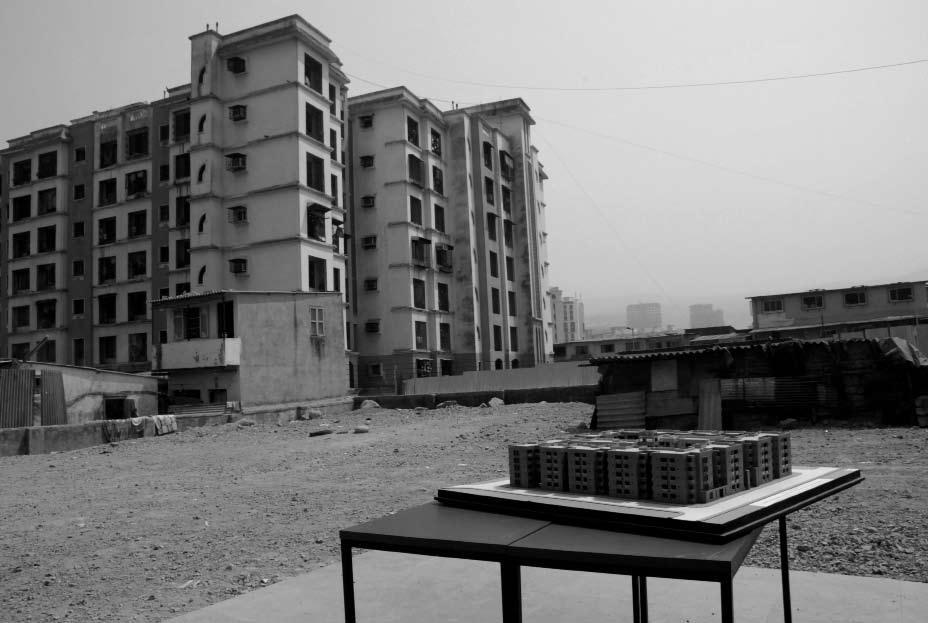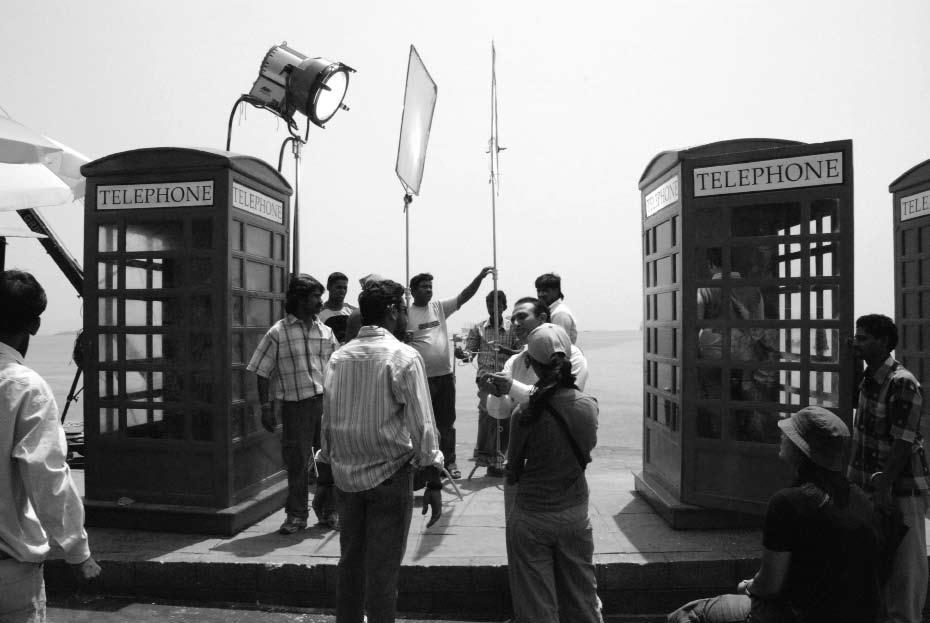
London
The Otolith Group
Gasworks
February 15—April 5, 2009
A Steadicam mutely enters the Jenin refugee camp. It films dead-end alleyways, closed iron doors, colorful football graffiti, card players gambling. It scans decrepit 1970s refrigerators for sale or repair in front of homes, follows three young boys playing with plastic machine guns — Abu Ammar flickering on a silent screen — and rests for some seconds on a woman in a shanty, looking out a window into bright sunlight coming out from somewhere she can scarcely hope to inhabit.
This was Nervus Rerum (2008), a sixty-minute video work by London-based collective the Otolith Group. Against a grim backdrop, the camera floated into Jenin, never really settling on any one thing for too long; more than once, viewers were moved to wonder if there was anyone behind it, guiding it. Screened as part of an Otolith retrospective that opened this past February, split between Gasworks and The Showroom, Rerum engaged with the difficulties of representing a place as saturated by media coverage as Palestine. Creating a work that was both video art and experimental cinema, the artists made questioning the ethnographic documentary as form (headshots, testimonial interviews, linear narratives, and even traditional ways of shaming the powers that be) a central concern. Eschewing standard scenes of destroyed homes and black-hooded resistance fighters clutching AK-47s, Otolith opted to turn away from traditional modes of addressing power.
To paraphrase Godard, Israel always gets the epic and Palestine the documentaries. In this way, the Otolith Group — named after a part of the inner ear sensitive to gravity and linear acceleration — succeeded in breaking with conventional approaches to poverty, subjugation, and terminality, manifest in the space of the refugee camp. Accompanied by fragments from Jean Genet’s Prisoner of Love and Fernando Pessoa’s The Book of Disquiet, Otolith members Kodwo Eshun and Anjalika Sagar took us on a ghostly, tired ride through a space that remained purposefully out of reach. In returning the labor of looking to the spectator — by using a camera that somehow excluded subjects and objects, seeming, as mentioned, simply to float — Nervus Rerum’s political and poetic vigilance allowed Palestine to become visible and audible, subtly foregrounding the unspeakable experience of Israel’s oppressive occupation.
How do we locate a space of images that is neither one of victimhood nor one of knee-jerk defiance to power? How do we challenge global regimes of representation that turn ruins and wars into a normative, familiar sight? What is sayable or showable about indifference, disaster, and the political? For the Otolith Group, as for others before them, these philosophical concerns are the driving force of their artistic practice. Inspired by the anti-documentary tendencies of Chris Marker, the Black Audio Film Collective, Jean-Luc Godard, and even science fiction, Otolith’s work has traditionally been concerned with the status of difference today — whether that takes the form of black, wretched, poor, postcolonial, refugee, female, or old revolutionary left. Through montages of archival images, fictive elements, and voiceover (always in Sagar’s melancholic but directive voice), the duo creates a new place from which to speak. Though it’s unclear if the work succeeds in turning its back on power, at its best it does succeed in evoking new ways of seeing and being.

In addition to Rerum, ‘A Long Time Between Suns’ encompassed three video works (Otolith I-III), an audio-video-photo screening, a series of talks, and a book in progress. In Communists Like Us, the Otolith Group sketched a dense trialogue of conversational fragments from Jean-Luc Godard’s La Chinoise, British composer Cornelius Cardew’s Scratch Orchestra, and a series of photos and captions documenting an Indian women’s feminist delegation to Mao’s China (drawn from Sagar’s grandmother’s archive). The event consisted of Eshun and Sagar sitting underneath three screens, one of which presented Sagar leafing through a massive book on Mao. Of course, none of these past moments, as manifest in trialogues, had actually been lived by the artists. Enacting these “non-experiences” after the fact left them open to reconstruction, rereading, and even reversal. In the end, this ode to a lost left and transnational socialism was also evocative of the construction of a new temporality.
Russian cosmonaut Valentina Tereshkova, the global 2003 anti-Iraq protests, Sagar training in a spaceship: Otolith I’s footage highlighted the group’s work as a constellation of ethically and formally engaged resonances. Set in the twenty-second century, the film created a new gravitational position of fictitious and actual figures: we no longer live on this earth as we used to; there is no singular core toward which we are pulled, but a multitude of pasts and futures from which we continually travel — a Benjaminian-Tarkovskian twist of present history writ backwards and forwards. It was no accident that “a long time between suns” was taken from William S. Burroughs’s 1962 novel The Ticket That Exploded. In fragmenting and reshuffling the linear construction of old, contemporary, and fictive images, the Otolith Group jettisoned any hope of a conventional narrative and underscored multiple accounts that were continually cut, interrupted, and repeated — finally paving a channel for fiction beyond yet through the image, and for truth beyond yet through fiction. Science-fiction imaginings and archival still and moving images became ways to imagine and comment on subjugated and sometimes unknowable (hi)stories.
Beginning on a film set, the camera in Otolith II eavesdropped on workers setting up models of classic red British telephone booths along an Indian seafront. It transported London back to where it’s meant to be forgotten, or India to where it’s meant to be remembered, through allusion to a colonial moment. We watched craftsmen at work as the searching camera awaited contact, in what appeared to be a call for intimacy and detail. Still meandering, the camera transported us to the city of Chandigarh, where Le Corbusier once planned his massive architectural project in the 1950s. The camera lingered on a bereft esplanade in front of the Secretariat Building: the carcasses of the lost project of modernism recalled the shortcomings of visionaries who sought to concretize the utopia of their era. These images slowly faded, and we were left with faint pixels and colors. The last scene took us through shantytowns at dusk. Sagar’s insistent, haunting voiceovers throughout spoke of lost childhoods and political destitution, weaving the autobiographical into the global and allowing new historical possibilities to emerge. Under a hypnotic drone we listened to her, as if we were the ones being driven toward the end of a journey.